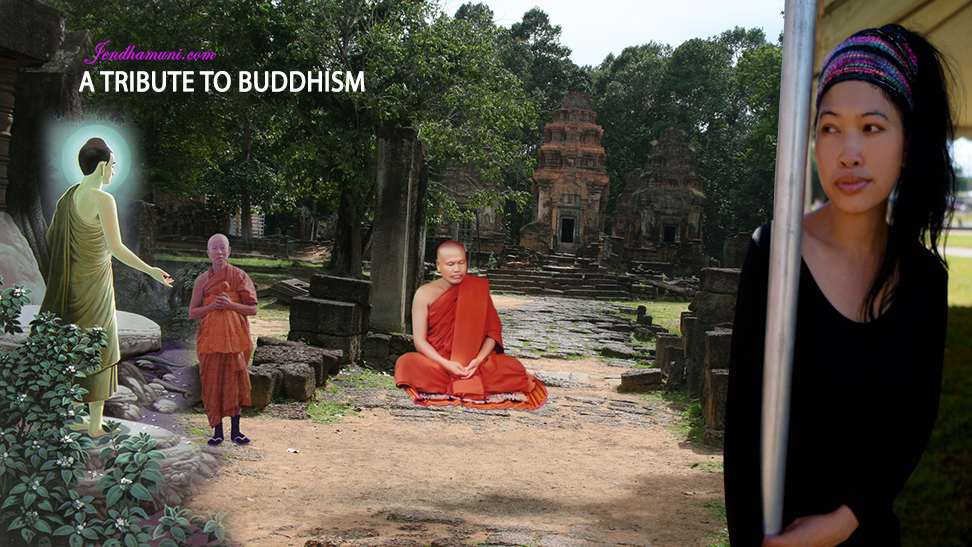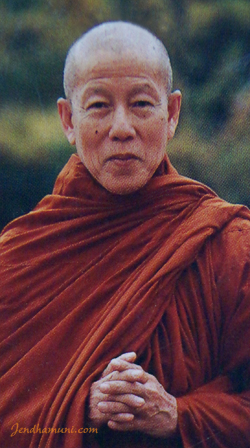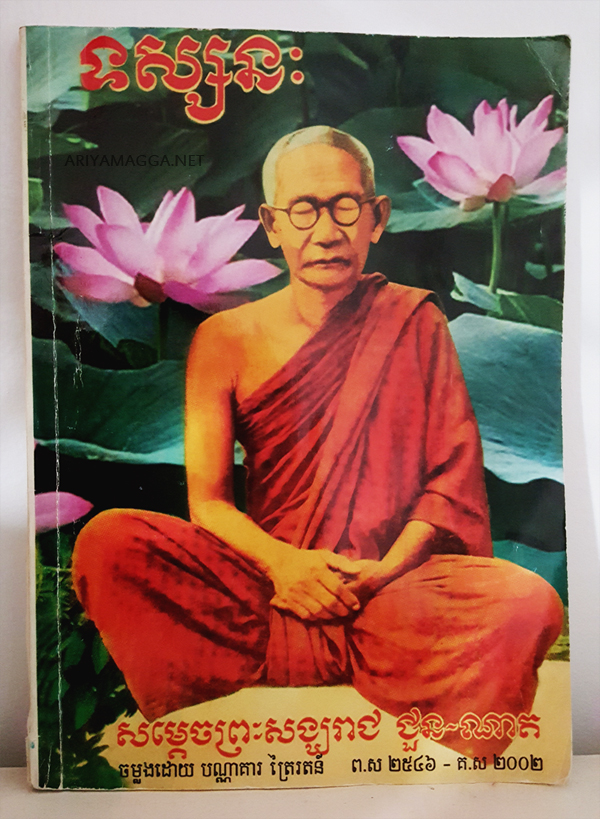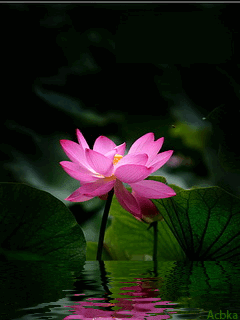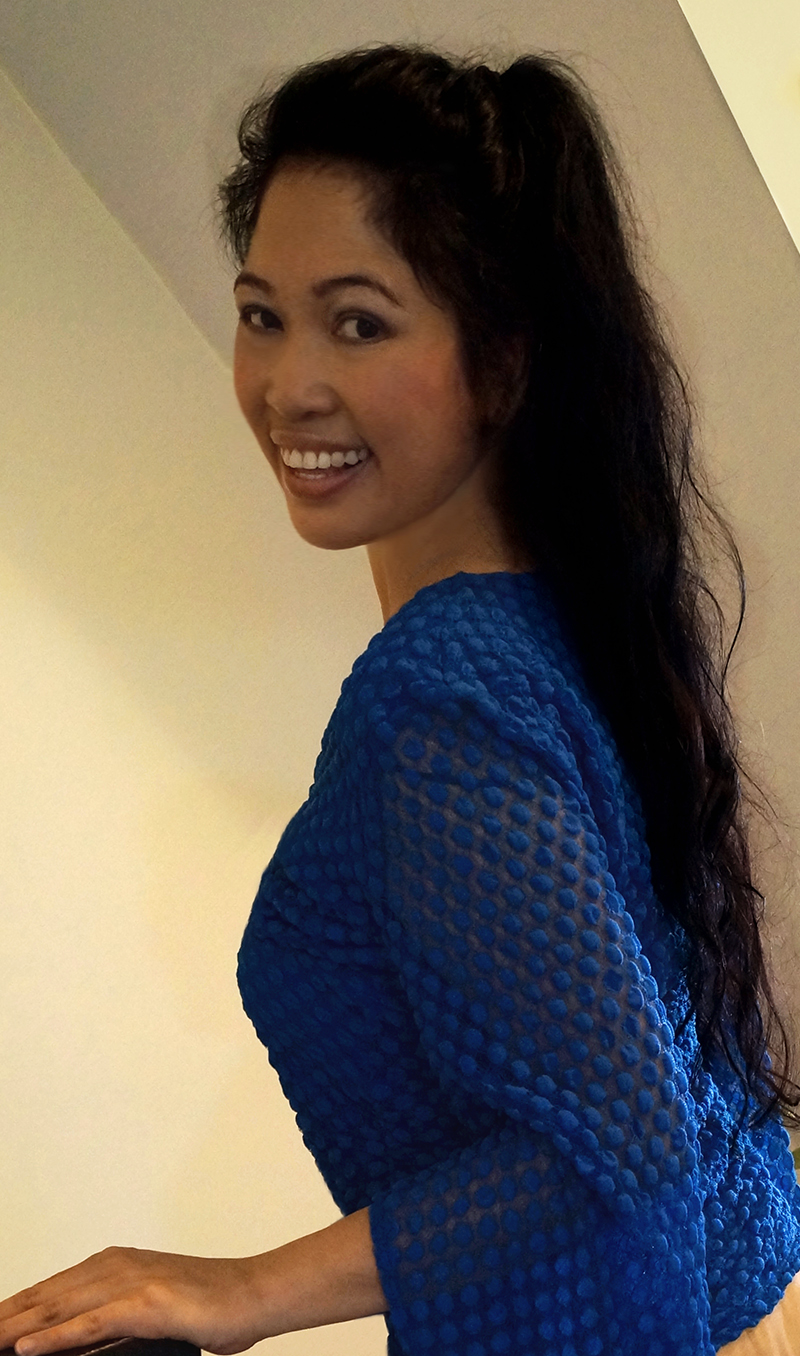-
Comment April 28, 2016
-
Just before his great renunciation
Comment April 27, 20167. Just before his great renunciation, the future Buddha went to the chamber of Princess Yasodhara to see his son
When the Future Buddha was 29 years of age he went to the park and saw the Four Signs, namely, an old man, a sick man, a dead man and a monk, whom the higher gods had fashioned. He was afraid to continue to live a worldly life and his mind turned ardently to retiring from the world. He said to himself, “It behooves me to go forth on the Great Renunciation this very day”. At that very moment he received a message that a son had been born to him.
He then returned to the palace and lying on his couch, fell into a brief slumber. When he awoke he saw the female musicians sleeping round him in disgusting condition. The spectacle seemed like a cemetery, and filled with loathing for his worldly life, he made up his mind to renounce the world at once. He ordered his courtier Channa to saddle his horse Kanthaka. He then walked to the chamber of Yasodhara to look at his son for the first time.
THE ILLUSTRATED HISTORY OF BUDDHISM
by ASHIN JANAKA BHIVAMSA (Aggamahapandita)
Artist: U Ba Kyi | Link to this post -
There is no fear…
Comment April 27, 2016There is no fear for one whose mind is not filled with desires. ~The Buddha, Dhammapada
-
A disciplined mind…
Comment April 27, 2016 -
Machas Steung Sangke by Mr. Koy Vanna
Comment April 26, 2016ម្ចាស់ស្ទឹងសង្កែ by Koy Vanna
Machas Steung Sangke ម្ចាស់ស្ទឹងសង្កែ
Written by Prum Kim Choeun | Sings by Mr. Koy Vanna
Dedicated to Mr. Kong Bun Chhoeun -
Be Who You Are…
Comment April 26, 2016 -
Nothing higher to live for
Comment April 26, 2016Nothing Higher to Live For
A Buddhist View of Romantic Love
by Bhikkhu Nyanasobhano (Leonard Price) © 2005If it is possible to live with a purpose, what should that purpose be? A purpose might be a guiding principle, a philosophy, or a value of sovereign importance that informs and directs our activities and thoughts. To have one is to live seriously — though not necessarily wisely — following some track, believing in a hub to the wheeling universe or a sea toward which we flow or an end before which all the hubbub of civilization subsides. What is your purpose, friend, or what should it be?
Perhaps most of us do not come to a clear conclusion in the matter, but this does not mean we have no purpose, only that we do not recognize it or admit it or even choose it for ourselves. In the unhappiest case nature simply takes its course, which is a turbid meandering through the swamps of desire. If life means nothing then only pleasure is worthwhile; or if life has meaning and we cannot get at it then still only enjoyment matters — such is the view of brutes and some sophisticated philosophers. It slips into the unconscious by default when we hold no other, but we are reluctant to entertain it and will rather, if we think about it, take as our purpose support of family, search for beauty, improvement of society, fame, self-expression, development of talent, and so on. But it might be fair to say that apart from these or beneath these the fundamental purpose of many of us is the search for love, particularly romantic love.
The love of a man for a woman and a woman for a man is often the floor to which people fall after the collapse of other dreams. It is held to be solid when nothing else is, and though it frequently gives way and dumps them into a basement of despair, it still enjoys a reputation of dependability. No matter that this reputation is illogical — it still flourishes and will continue to flourish regardless of what is said in any book. Love, or possibly the myth of love, is the first, last, and sometimes the only refuge of uncomprehending humanity. What else makes our hearts beat so fast? What else makes us swoon with feeling? What else renders us so intensely alive and aching? The search for love — the sublime, the nebulous, the consuming — remains sacred in a world that increasingly despises the sacred. When the heroic and the transcendental are but memories, when religious institutions fill up with bureaucrats and social scientists, when nobody believes there is a sky beyond the ceiling, then there seems no other escape from the prison of self than the abandon of love. With a gray age of spiritual deadness upon us, we love, or beg for love, or grieve for love. We have nothing higher to live for. Continue reading
-
Wedding ceremony of Prince Siddhattha
Comment April 26, 20166. Wedding ceremony of Prince Siddhattha
When the Future Buddha was sixteen years of age, his father King Suddhodana sent official intimation to his relatives asking them to send their daughters to be married to his son. There arose the following discussion among his relatives, who were Rulers of their own states:—”Siddhattha is of handsome appearance but is not well trained in any manly art”. They did not, therefore, comply with the request of King Suddhodana. The King told his son what his relatives had said about him, when the Prince agreed to show his proficiency as the best bowman of the day. Consequently the most distinguished bowmen of the city were assembled in the palace grounds. The Future Buddha placed them at four different points and directions round him while he stood in the centre. He then said to them. “You must shoot your arrows at me all at the same time”. When the signal to shoot was given, the four archers shot their arrows at him all at once. The Prince defended himself by shooting an arrow which flew like lightning and hit all the four arrows coming in his direction. He thus exhibited his skill, such as none other bowmen could equal. His father’s relatives then sent their daughters, beautiful maidens, of whom the Prince chose Princess Yasodhara whom he married by celebrating a grand wedding.
THE ILLUSTRATED HISTORY OF BUDDHISM
by ASHIN JANAKA BHIVAMSA (Aggamahapandita)
Artist: U Ba Kyi | Link to this post -
Life of elderly couple
Comment April 25, 2016 -
Each human being is a multiplicity of miracles
Comment April 25, 2016

